Special Report
The Metro Where Families Pay the Most for Food in Every State

Published:

Inflation is surging in the United States – in large part because of rising food prices. In cities across the country, food today is 8% more expensive on average than it was a year ago, and American families are feeling the pinch.
According to the Economic Policy Institute, a nonprofit think tank, a family of four – two adults and two children – can expect to pay an estimated $9,835 on food in 2022. This amount varies across the country, however, and in most states, there is at least one metropolitan area where families are paying more than the estimated national average for food. Here is a look at the countries with the most and least affordable groceries.
Using data from the EPI’s Family Budget Calculator, 24/7 Wall St. identified the metro area in every state where families pay the most for food. Metro areas are ranked on estimated food expenditure in 2022, assuming a nutritionally adequate diet for two adults and two children, where almost all food is bought at a grocery store and prepared at home.
It is important to note that four states – Delaware, New Hampshire, Rhode Island, and Vermont – each have only one metro area. As a result, the metro area in these places ranks as having the highest food costs by default only. In metro areas with the same estimated annual food cost, the metro area with the higher food insecurity rate – defined as the share of the population not always able to afford or otherwise access well-balanced meals – ranks as having higher food costs.
Among the metro areas on this list, estimated annual food costs range from $8,800 to over $15,000, and in most cases, food costs are about $500 or more above the statewide average. Higher food costs in these places are often a reflection of what residents can afford. Most metro areas on this list have a higher median family income than the comparable statewide average. Here is a look at the income needed to be middle class in each state.
Click here to see the metro where families pay the most for food in every state
Click here to read our detailed methodology

Alabama: Daphne-Fairhope-Foley
> Est. annual food costs: $10,734 (Alabama: $9,631)
> Median family income: $79,907 (Alabama: $66,772)
> Food Stamp recipiency rate: 7.2% (Alabama: 13.7%)
> Food insecurity rate: 5.4% (Alabama: 7.9%)
> No. of metros considered in ranking: 12
[in-text-ad]

Alaska: Anchorage
> Est. annual food costs: $9,092 (Alaska: $9,419)
> Median family income: $98,403 (Alaska: $92,648)
> Food Stamp recipiency rate: 11.8% (Alaska: 12.9%)
> Food insecurity rate: 5.7% (Alaska: 9.2%)
> No. of metros considered in ranking: 2

Arizona: Prescott Valley-Prescott
> Est. annual food costs: $9,954 (Arizona: $9,338)
> Median family income: $66,999 (Arizona: $73,456)
> Food Stamp recipiency rate: 8.8% (Arizona: 11.2%)
> Food insecurity rate: 12.6% (Arizona: 7.5%)
> No. of metros considered in ranking: 7

Arkansas: Little Rock-North Little Rock-Conway
> Est. annual food costs: $9,277 (Arkansas: $8,838)
> Median family income: $72,289 (Arkansas: $62,067)
> Food Stamp recipiency rate: 10.3% (Arkansas: 12.2%)
> Food insecurity rate: 8.4% (Arkansas: 8.7%)
> No. of metros considered in ranking: 6
[in-text-ad-2]

California: San Francisco-Oakland-Berkeley
> Est. annual food costs: $13,305 (California: $10,543)
> Median family income: $131,087 (California: $89,798)
> Food Stamp recipiency rate: 6.6% (California: 10.2%)
> Food insecurity rate: 1.4% (California: 3.3%)
> No. of metros considered in ranking: 26
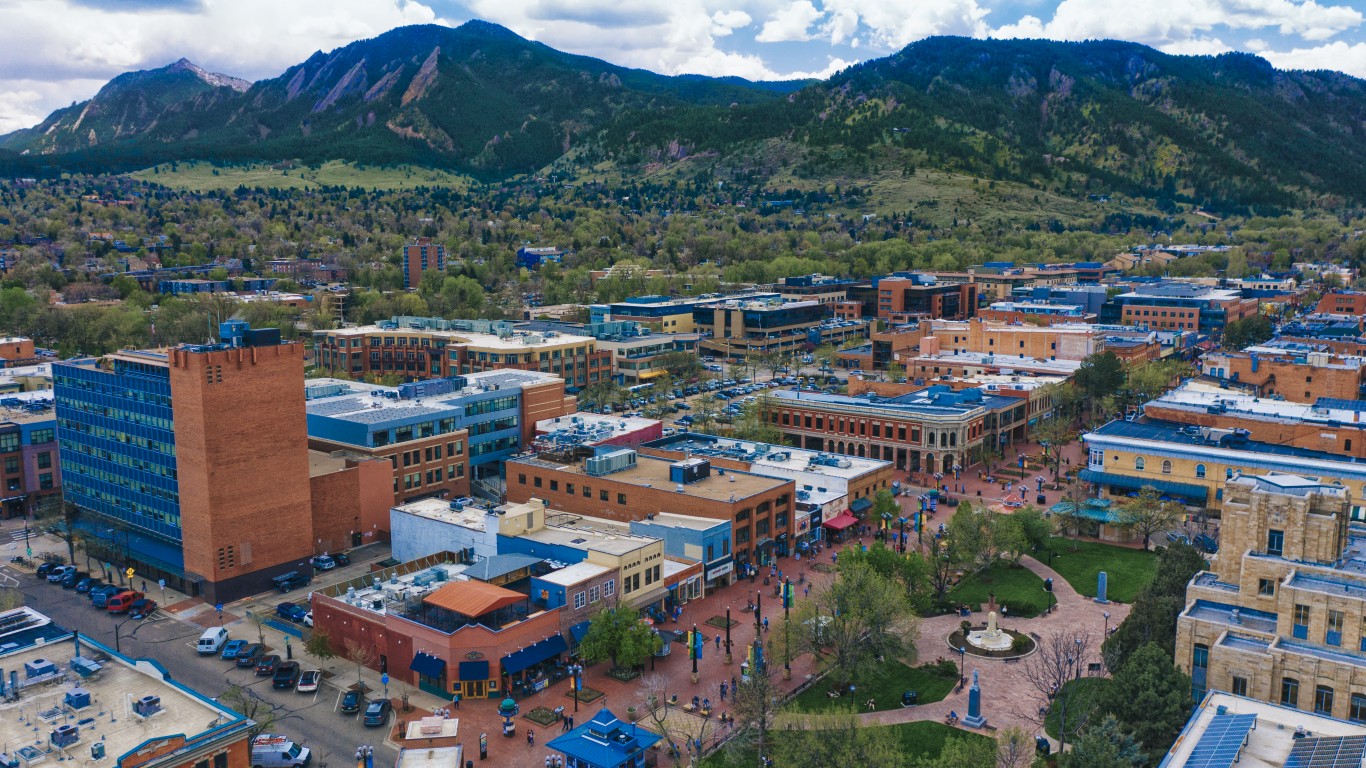
Colorado: Boulder
> Est. annual food costs: $11,843 (Colorado: $10,384)
> Median family income: $118,307 (Colorado: $92,752)
> Food Stamp recipiency rate: 5.5% (Colorado: 8.0%)
> Food insecurity rate: 3.1% (Colorado: 5.5%)
> No. of metros considered in ranking: 7
[in-text-ad]
Connecticut: Bridgeport-Stamford-Norwalk
> Est. annual food costs: $12,173 (Connecticut: $10,910)
> Median family income: $120,156 (Connecticut: $102,061)
> Food Stamp recipiency rate: 9.1% (Connecticut: 12.4%)
> Food insecurity rate: 3.2% (Connecticut: 4.3%)
> No. of metros considered in ranking: 4

Delaware: Dover
> Est. annual food costs: $9,055 (Delaware: $10,169)
> Median family income: $70,383 (Delaware: $84,825)
> Food Stamp recipiency rate: 15.6% (Delaware: 11.5%)
> Food insecurity rate: 4.5% (Delaware: 4.7%)
> No. of metros considered in ranking: 1
*Because Dover is the only eligible metro in Delaware, it is the metro with the highest food costs by default.

Florida: Sebastian-Vero Beach
> Est. annual food costs: $11,333 (Florida: $10,385)
> Median family income: $72,001 (Florida: $69,670)
> Food Stamp recipiency rate: 8.2% (Florida: 13.9%)
> Food insecurity rate: 13.6% (Florida: 7.2%)
> No. of metros considered in ranking: 22
[in-text-ad-2]

Georgia: Brunswick
> Est. annual food costs: $10,195 (Georgia: $9,507)
> Median family income: $68,432 (Georgia: $74,127)
> Food Stamp recipiency rate: 15.7% (Georgia: 12.8%)
> Food insecurity rate: 8.2% (Georgia: 9.0%)
> No. of metros considered in ranking: 14

Hawaii: Kahului-Wailuku-Lahaina
> Est. annual food costs: $15,094 (Hawaii: $14,042)
> Median family income: $92,627 (Hawaii: $97,813)
> Food Stamp recipiency rate: 10.7% (Hawaii: 11.8%)
> Food insecurity rate: 8.2% (Hawaii: 6.9%)
> No. of metros considered in ranking: 2
[in-text-ad]

Idaho: Coeur d’Alene
> Est. annual food costs: $10,104 (Idaho: $9,786)
> Median family income: $72,376 (Idaho: $70,885)
> Food Stamp recipiency rate: 9.6% (Idaho: 10.0%)
> Food insecurity rate: 7.8% (Idaho: 7.1%)
> No. of metros considered in ranking: 5

Illinois: Chicago-Naperville-Elgin
> Est. annual food costs: $9,601 (Illinois: $9,274)
> Median family income: $92,668 (Illinois: $86,251)
> Food Stamp recipiency rate: 12.5% (Illinois: 13.1%)
> Food insecurity rate: 3.6% (Illinois: 4.5%)
> No. of metros considered in ranking: 9
Indiana: Bloomington
> Est. annual food costs: $9,085 (Indiana: $8,544)
> Median family income: $74,499 (Indiana: $73,265)
> Food Stamp recipiency rate: 7.9% (Indiana: 9.8%)
> Food insecurity rate: 3.9% (Indiana: 6.9%)
> No. of metros considered in ranking: 12
[in-text-ad-2]

Iowa: Des Moines-West Des Moines
> Est. annual food costs: $9,319 (Iowa: $8,885)
> Median family income: $89,538 (Iowa: $79,186)
> Food Stamp recipiency rate: 10.9% (Iowa: 10.6%)
> Food insecurity rate: 3.3% (Iowa: 5.6%)
> No. of metros considered in ranking: 8

Kansas: Manhattan
> Est. annual food costs: $10,848 (Kansas: $9,341)
> Median family income: $70,357 (Kansas: $77,620)
> Food Stamp recipiency rate: 7.4% (Kansas: 7.8%)
> Food insecurity rate: 15.3% (Kansas: 8.3%)
> No. of metros considered in ranking: 4
[in-text-ad]

Kentucky: Lexington-Fayette
> Est. annual food costs: $9,102 (Kentucky: $8,527)
> Median family income: $78,944 (Kentucky: $65,893)
> Food Stamp recipiency rate: 10.1% (Kentucky: 13.6%)
> Food insecurity rate: 6.7% (Kentucky: 5.6%)
> No. of metros considered in ranking: 5
Louisiana: New Orleans-Metairie
> Est. annual food costs: $10,471 (Louisiana: $9,748)
> Median family income: $72,053 (Louisiana: $65,427)
> Food Stamp recipiency rate: 13.6% (Louisiana: 15.8%)
> Food insecurity rate: 7.9% (Louisiana: 9.5%)
> No. of metros considered in ranking: 9
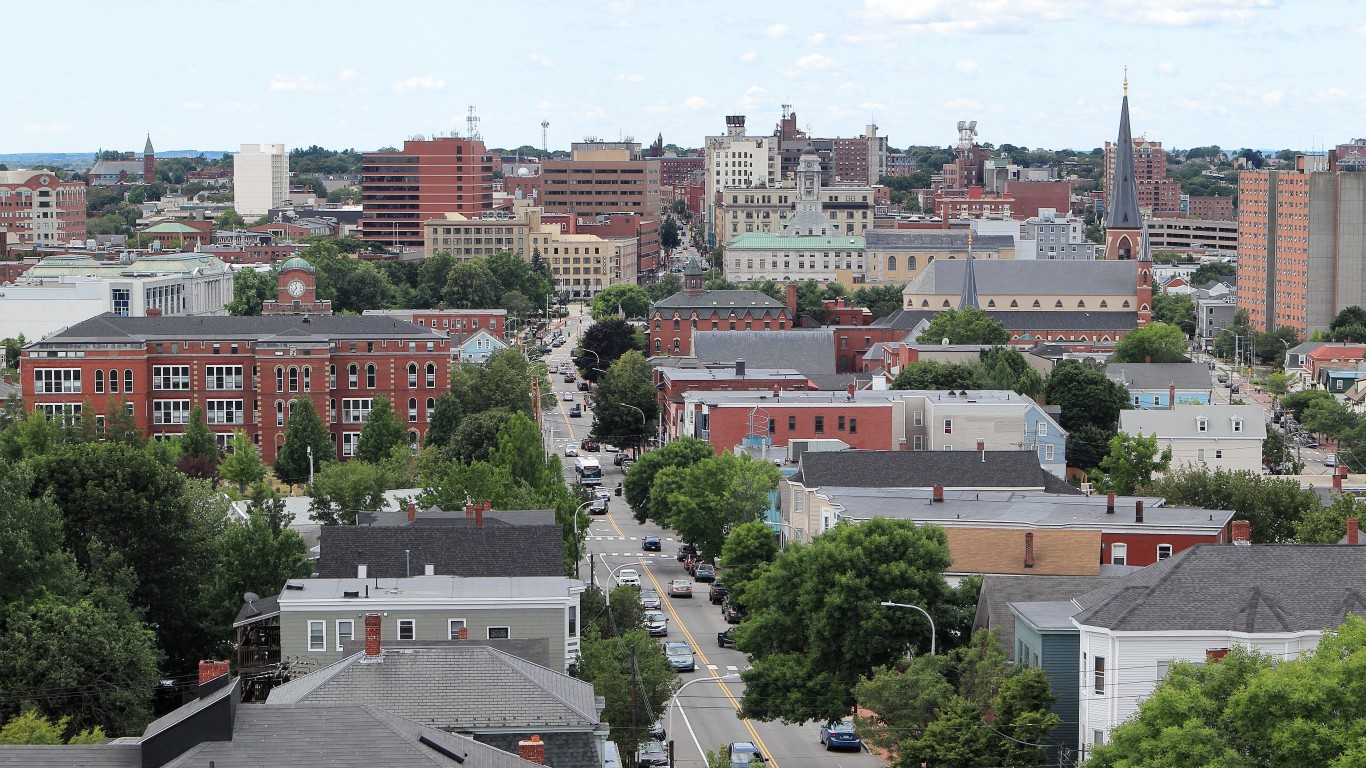
Maine: Portland-South Portland
> Est. annual food costs: $12,245 (Maine: $11,480)
> Median family income: $89,988 (Maine: $76,192)
> Food Stamp recipiency rate: 9.4% (Maine: 13.5%)
> Food insecurity rate: 3.9% (Maine: 3.8%)
> No. of metros considered in ranking: 3
[in-text-ad-2]

Maryland: Baltimore-Columbia-Towson
> Est. annual food costs: $10,235 (Maryland: $10,293)
> Median family income: $104,637 (Maryland: $105,790)
> Food Stamp recipiency rate: 11.7% (Maryland: 10.8%)
> Food insecurity rate: 2.8% (Maryland: 3.4%)
> No. of metros considered in ranking: 5

Massachusetts: Barnstable Town
> Est. annual food costs: $13,162 (Massachusetts: $11,674)
> Median family income: $99,410 (Massachusetts: $106,526)
> Food Stamp recipiency rate: 7.5% (Massachusetts: 12.5%)
> Food insecurity rate: 9.7% (Massachusetts: 4.1%)
> No. of metros considered in ranking: 5
[in-text-ad]
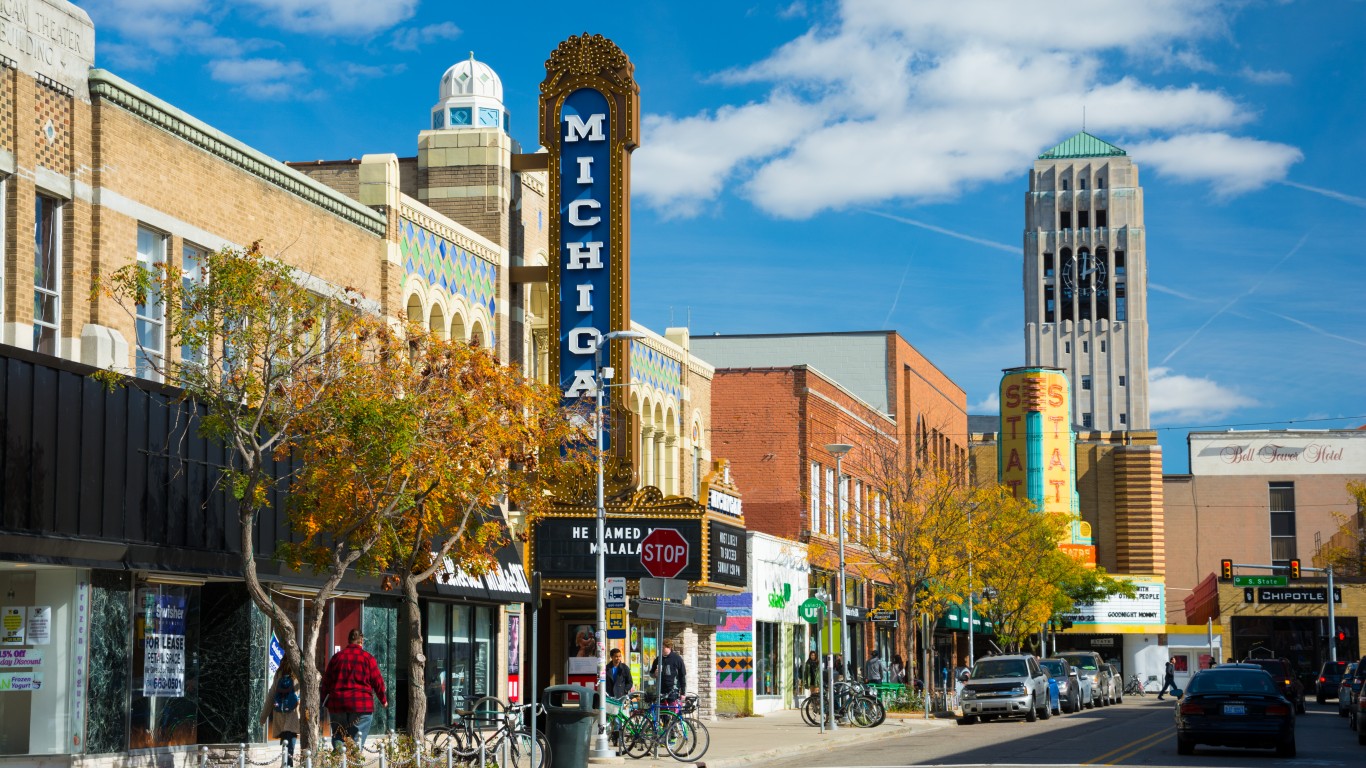
Michigan: Ann Arbor
> Est. annual food costs: $10,164 (Michigan: $9,058)
> Median family income: $105,224 (Michigan: $75,470)
> Food Stamp recipiency rate: 7.7% (Michigan: 13.5%)
> Food insecurity rate: 6.0% (Michigan: 6.3%)
> No. of metros considered in ranking: 14

Minnesota: Minneapolis-St. Paul-Bloomington
> Est. annual food costs: $10,295 (Minnesota: $9,936)
> Median family income: $103,977 (Minnesota: $92,692)
> Food Stamp recipiency rate: 8.0% (Minnesota: 8.4%)
> Food insecurity rate: 4.8% (Minnesota: 5.6%)
> No. of metros considered in ranking: 5

Mississippi: Jackson
> Est. annual food costs: $9,678 (Mississippi: $9,350)
> Median family income: $67,202 (Mississippi: $58,923)
> Food Stamp recipiency rate: 13.3% (Mississippi: 15.2%)
> Food insecurity rate: 10.7% (Mississippi: 10.7%)
> No. of metros considered in ranking: 3
[in-text-ad-2]
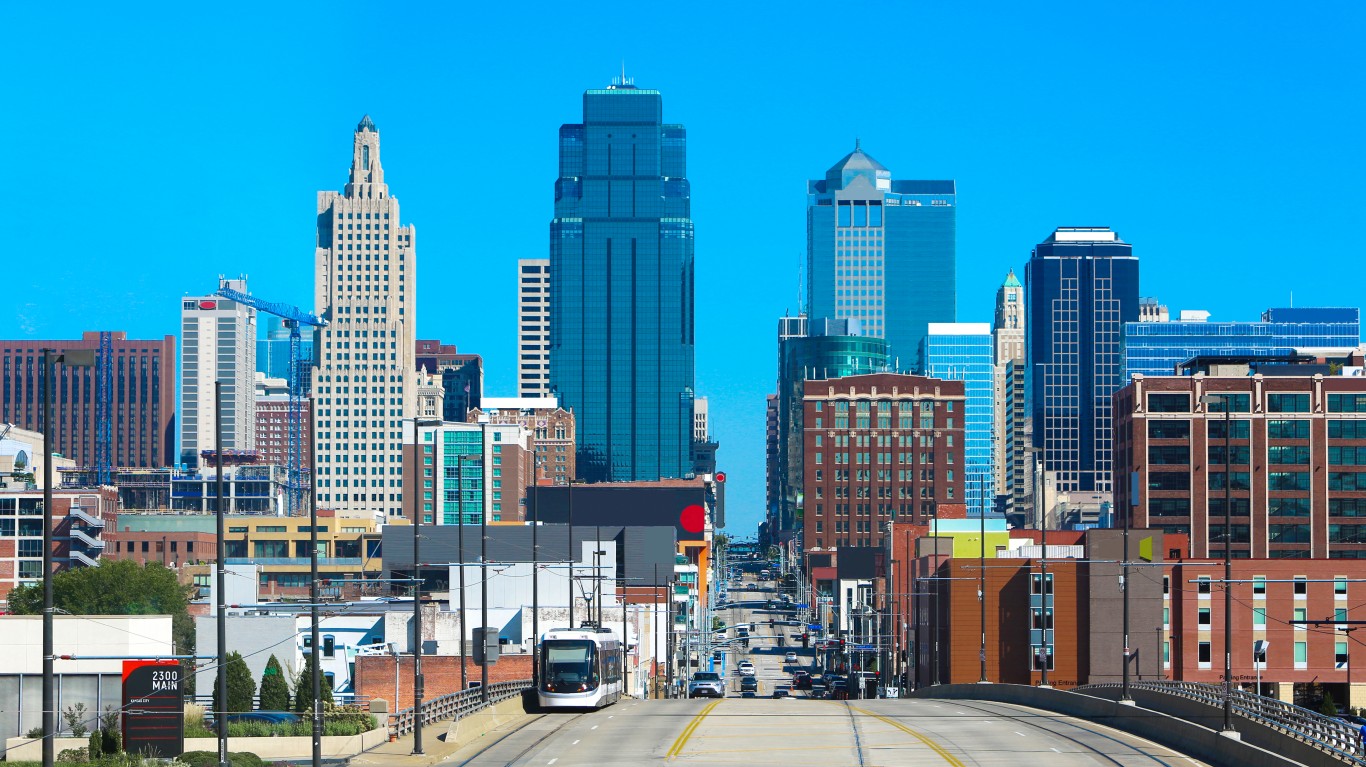
Missouri: Kansas City
> Est. annual food costs: $9,492 (Missouri: $9,104)
> Median family income: $86,562 (Missouri: $72,834)
> Food Stamp recipiency rate: 7.9% (Missouri: 11.1%)
> Food insecurity rate: 6.3% (Missouri: 6.8%)
> No. of metros considered in ranking: 8
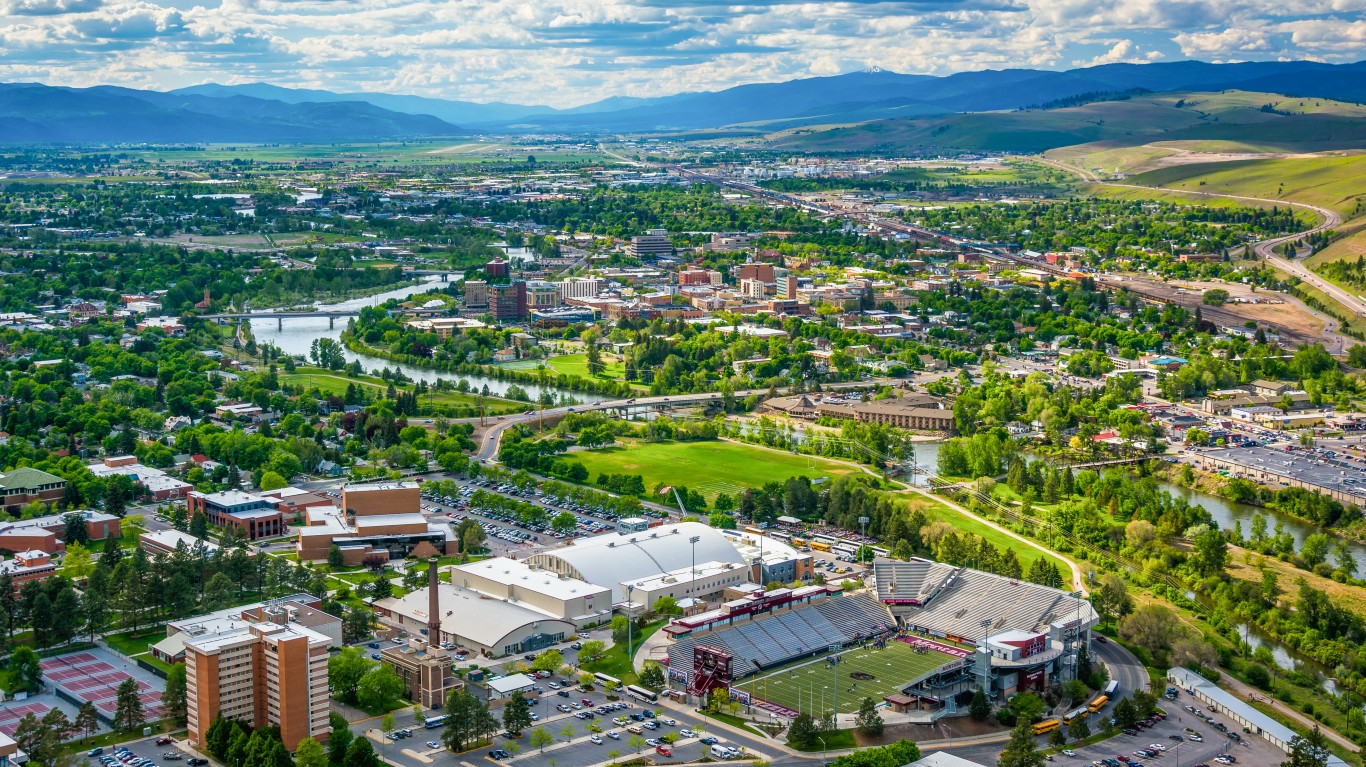
Montana: Missoula
> Est. annual food costs: $9,744 (Montana: $9,782)
> Median family income: $76,923 (Montana: $72,773)
> Food Stamp recipiency rate: 10.9% (Montana: 10.1%)
> Food insecurity rate: 6.6% (Montana: 8.3%)
> No. of metros considered in ranking: 3
[in-text-ad]
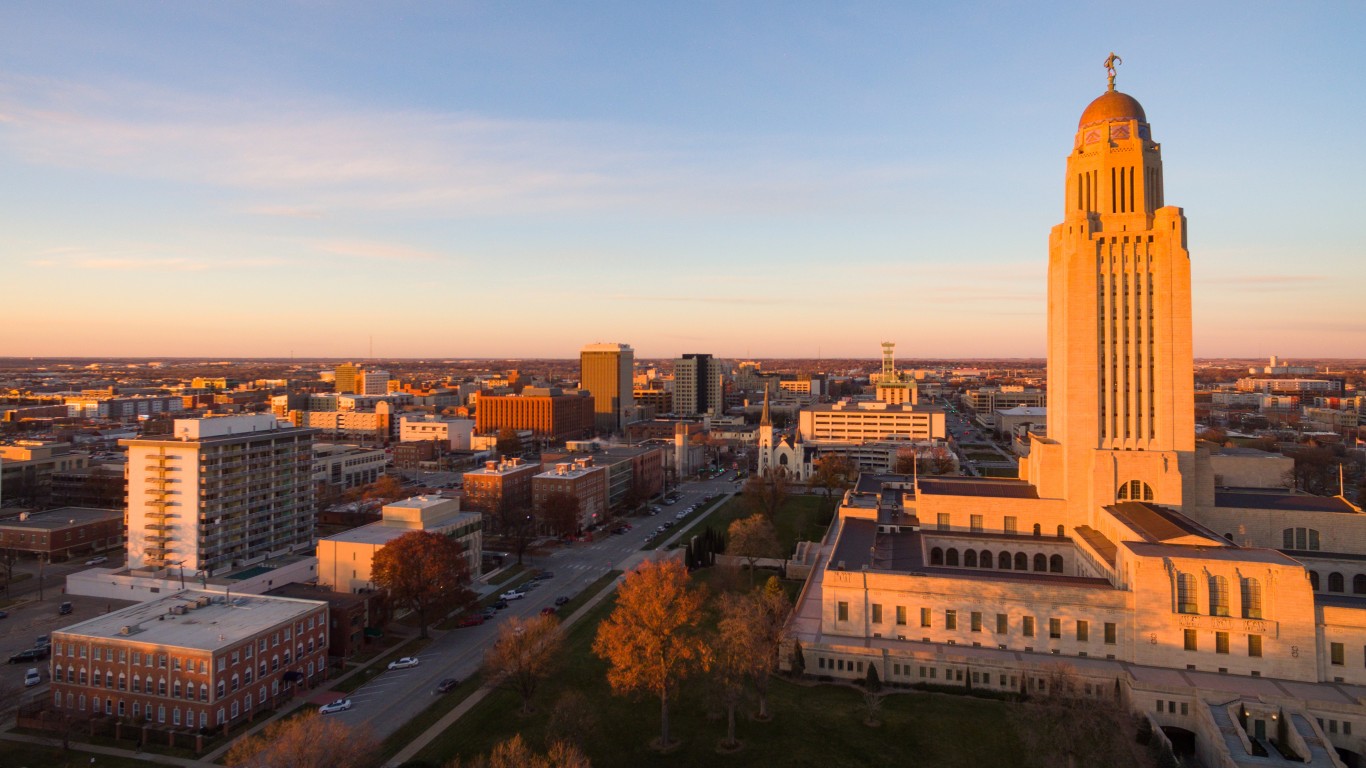
Nebraska: Lincoln
> Est. annual food costs: $9,055 (Nebraska: $9,081)
> Median family income: $82,381 (Nebraska: $80,125)
> Food Stamp recipiency rate: 8.4% (Nebraska: 8.7%)
> Food insecurity rate: 2.7% (Nebraska: 5.6%)
> No. of metros considered in ranking: 2

Nevada: Reno
> Est. annual food costs: $10,253 (Nevada: $9,990)
> Median family income: $84,215 (Nevada: $74,077)
> Food Stamp recipiency rate: 11.1% (Nevada: 12.7%)
> Food insecurity rate: 7.7% (Nevada: 5.4%)
> No. of metros considered in ranking: 3

New Hampshire: Manchester-Nashua
> Est. annual food costs: $10,554 (New Hampshire: $10,832)
> Median family income: $103,238 (New Hampshire: $97,001)
> Food Stamp recipiency rate: 7.7% (New Hampshire: 7.4%)
> Food insecurity rate: 5.5% (New Hampshire: 5.0%)
> No. of metros considered in ranking: 1
*Because Manchester-Nashua is the only eligible metro in New Hampshire, it is the metro with the highest food costs by default.
[in-text-ad-2]
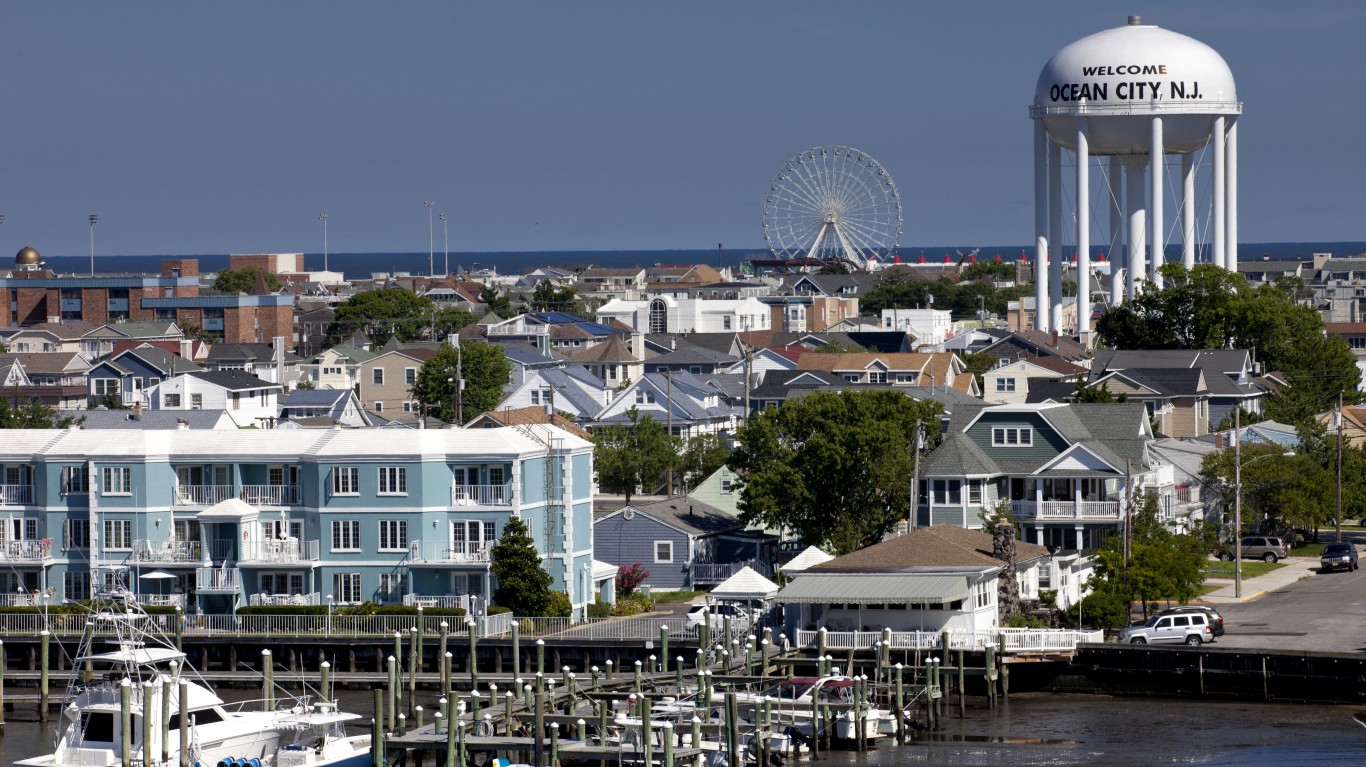
New Jersey: Ocean City
> Est. annual food costs: $11,303 (New Jersey: $10,750)
> Median family income: $87,716 (New Jersey: $104,804)
> Food Stamp recipiency rate: 7.0% (New Jersey: 9.1%)
> Food insecurity rate: 8.8% (New Jersey: 3.6%)
> No. of metros considered in ranking: 4
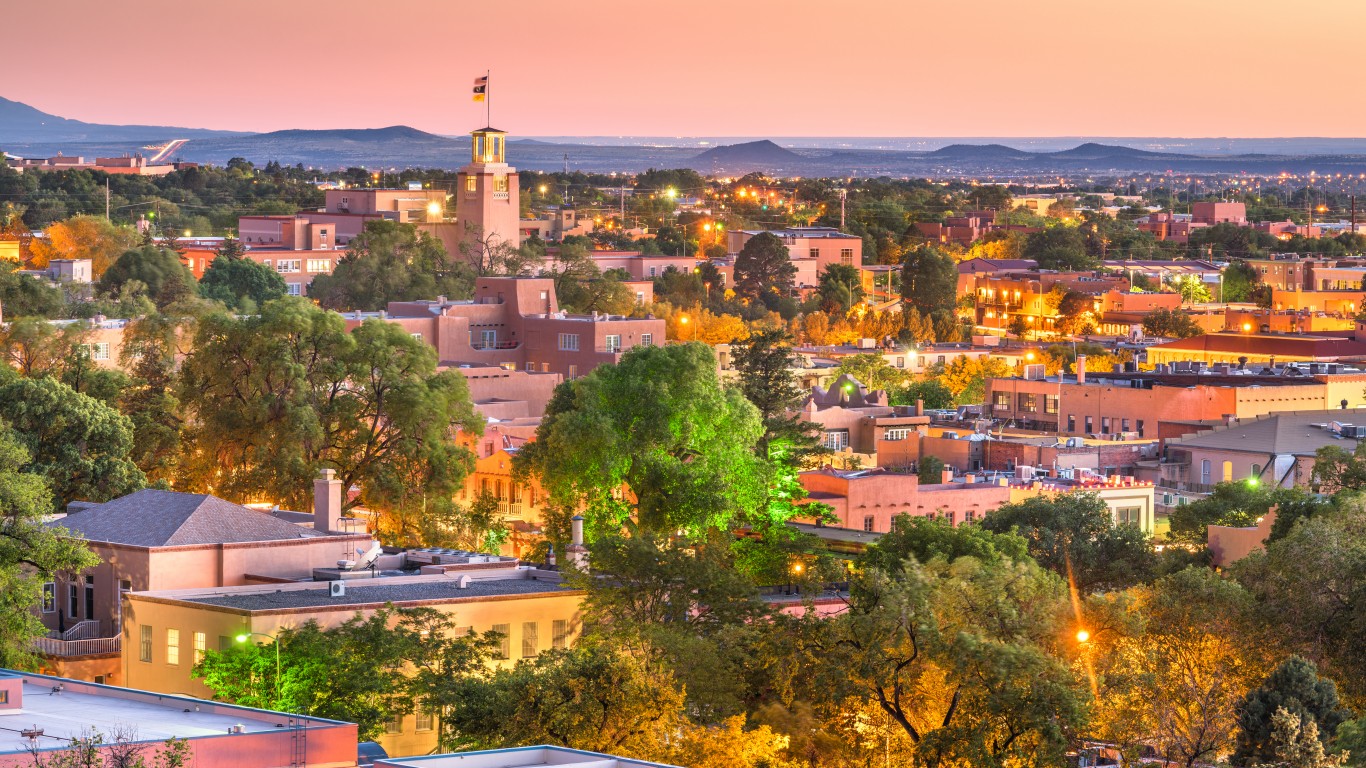
New Mexico: Santa Fe
> Est. annual food costs: $10,344 (New Mexico: $9,297)
> Median family income: $73,862 (New Mexico: $62,611)
> Food Stamp recipiency rate: 11.1% (New Mexico: 17.7%)
> Food insecurity rate: 11.0% (New Mexico: 14.0%)
> No. of metros considered in ranking: 4
[in-text-ad]

New York: New York-Newark-Jersey City
> Est. annual food costs: $12,418 (New York: $11,180)
> Median family income: $99,148 (New York: $87,270)
> Food Stamp recipiency rate: 13.6% (New York: 15.2%)
> Food insecurity rate: 1.6% (New York: 2.3%)
> No. of metros considered in ranking: 13

North Carolina: Durham-Chapel Hill
> Est. annual food costs: $10,514 (North Carolina: $9,267)
> Median family income: $84,764 (North Carolina: $70,978)
> Food Stamp recipiency rate: 9.8% (North Carolina: 12.5%)
> Food insecurity rate: 7.0% (North Carolina: 6.7%)
> No. of metros considered in ranking: 14
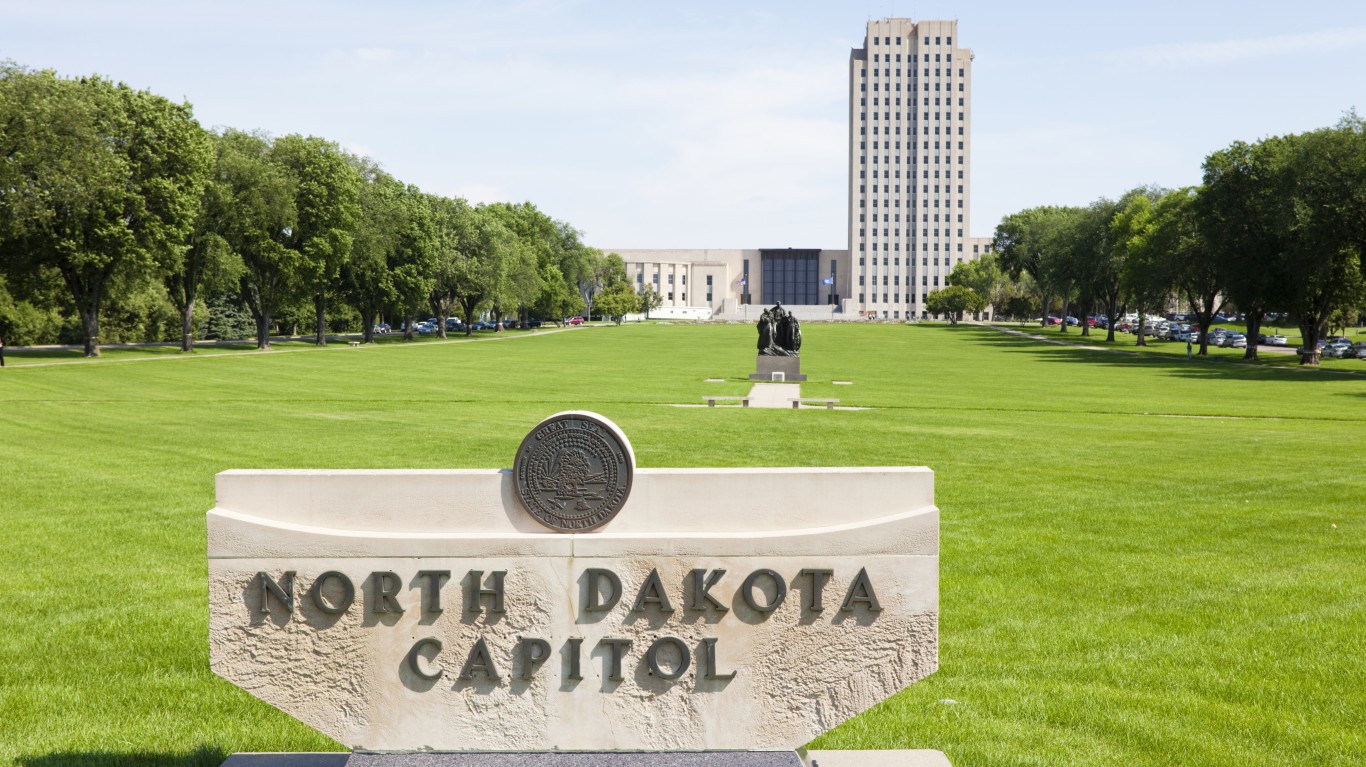
North Dakota: Bismarck
> Est. annual food costs: $9,730 (North Dakota: $9,824)
> Median family income: $93,359 (North Dakota: $86,798)
> Food Stamp recipiency rate: 6.4% (North Dakota: 7.3%)
> Food insecurity rate: 6.1% (North Dakota: 7.0%)
> No. of metros considered in ranking: 3
[in-text-ad-2]

Ohio: Cleveland-Elyria
> Est. annual food costs: $9,486 (Ohio: $8,904)
> Median family income: $76,766 (Ohio: $74,391)
> Food Stamp recipiency rate: 14.5% (Ohio: 13.3%)
> Food insecurity rate: 5.1% (Ohio: 6.8%)
> No. of metros considered in ranking: 11

Oklahoma: Tulsa
> Est. annual food costs: $9,483 (Oklahoma: $9,223)
> Median family income: $72,203 (Oklahoma: $67,511)
> Food Stamp recipiency rate: 12.4% (Oklahoma: 13.4%)
> Food insecurity rate: 8.7% (Oklahoma: 8.6%)
> No. of metros considered in ranking: 4
[in-text-ad]

Oregon: Bend
> Est. annual food costs: $10,674 (Oregon: $10,175)
> Median family income: $81,822 (Oregon: $80,630)
> Food Stamp recipiency rate: 11.3% (Oregon: 16.0%)
> Food insecurity rate: 5.3% (Oregon: 5.4%)
> No. of metros considered in ranking: 8

Pennsylvania: Gettysburg
> Est. annual food costs: $10,884 (Pennsylvania: $9,903)
> Median family income: $84,709 (Pennsylvania: $80,996)
> Food Stamp recipiency rate: 8.1% (Pennsylvania: 13.9%)
> Food insecurity rate: 3.0% (Pennsylvania: 4.6%)
> No. of metros considered in ranking: 17

Rhode Island: Providence-Warwick
> Est. annual food costs: $10,768 (Rhode Island: $10,834)
> Median family income: $89,555 (Rhode Island: $89,330)
> Food Stamp recipiency rate: 16.2% (Rhode Island: 15.9%)
> Food insecurity rate: 4.6% (Rhode Island: 4.7%)
> No. of metros considered in ranking: 1
*Because Providence-Warwick is the only eligible metro in Rhode Island, it is the metro with the highest food costs by default.
[in-text-ad-2]

South Carolina: Charleston-North Charleston
> Est. annual food costs: $10,118 (South Carolina: $9,086)
> Median family income: $82,122 (South Carolina: $68,813)
> Food Stamp recipiency rate: 8.3% (South Carolina: 11.7%)
> Food insecurity rate: 7.2% (South Carolina: 9.1%)
> No. of metros considered in ranking: 7

South Dakota: Rapid City
> Est. annual food costs: $9,654 (South Dakota: $9,546)
> Median family income: $74,413 (South Dakota: $77,042)
> Food Stamp recipiency rate: 10.1% (South Dakota: 9.5%)
> Food insecurity rate: 8.5% (South Dakota: 10.5%)
> No. of metros considered in ranking: 2
[in-text-ad]

Tennessee: Chattanooga
> Est. annual food costs: $9,907 (Tennessee: $9,595)
> Median family income: $70,533 (Tennessee: $68,793)
> Food Stamp recipiency rate: 11.9% (Tennessee: 13.1%)
> Food insecurity rate: 12.0% (Tennessee: 8.5%)
> No. of metros considered in ranking: 10

Texas: Austin-Round Rock-Georgetown
> Est. annual food costs: $9,720 (Texas: $8,660)
> Median family income: $100,215 (Texas: $76,073)
> Food Stamp recipiency rate: 7.1% (Texas: 12.1%)
> Food insecurity rate: 7.5% (Texas: 8.7%)
> No. of metros considered in ranking: 25

Utah: St. George
> Est. annual food costs: $9,594 (Utah: $9,239)
> Median family income: $72,683 (Utah: $84,590)
> Food Stamp recipiency rate: 7.3% (Utah: 6.9%)
> Food insecurity rate: 9.3% (Utah: 5.8%)
> No. of metros considered in ranking: 5
[in-text-ad-2]

Vermont: Burlington-South Burlington
> Est. annual food costs: $11,376 (Vermont: $11,430)
> Median family income: $95,011 (Vermont: $83,023)
> Food Stamp recipiency rate: 8.9% (Vermont: 11.5%)
> Food insecurity rate: 2.5% (Vermont: 3.3%)
> No. of metros considered in ranking: 1
*Because Burlington-South Burlington is the only eligible metro in Vermont, it is the metro with the highest food costs by default.

Virginia: Charlottesville
> Est. annual food costs: $10,961 (Virginia: $10,064)
> Median family income: $95,708 (Virginia: $93,284)
> Food Stamp recipiency rate: 6.0% (Virginia: 8.5%)
> Food insecurity rate: 3.2% (Virginia: 4.3%)
> No. of metros considered in ranking: 9
[in-text-ad]

Washington: Seattle-Tacoma-Bellevue
> Est. annual food costs: $11,293 (Washington: $10,525)
> Median family income: $109,109 (Washington: $92,422)
> Food Stamp recipiency rate: 10.0% (Washington: 12.0%)
> Food insecurity rate: 4.3% (Washington: 5.5%)
> No. of metros considered in ranking: 10

West Virginia: Morgantown
> Est. annual food costs: $8,800 (West Virginia: $8,634)
> Median family income: $77,584 (West Virginia: $61,707)
> Food Stamp recipiency rate: 12.0% (West Virginia: 17.1%)
> Food insecurity rate: 7.3% (West Virginia: 6.6%)
> No. of metros considered in ranking: 6
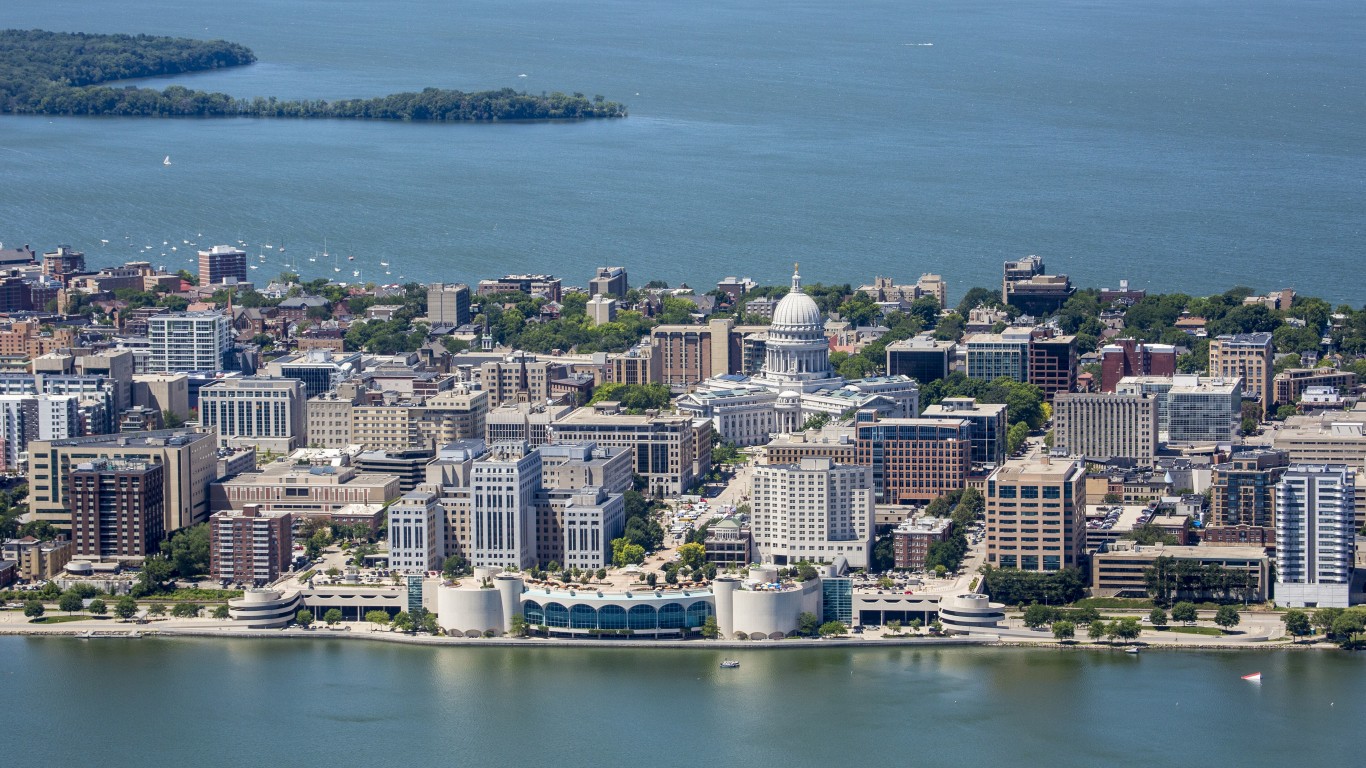
Wisconsin: Madison
> Est. annual food costs: $9,864 (Wisconsin: $9,058)
> Median family income: $97,334 (Wisconsin: $80,844)
> Food Stamp recipiency rate: 7.6% (Wisconsin: 10.9%)
> Food insecurity rate: 4.8% (Wisconsin: 4.8%)
> No. of metros considered in ranking: 12
[in-text-ad-2]

Wyoming: Cheyenne
> Est. annual food costs: $9,444 (Wyoming: $9,917)
> Median family income: $82,325 (Wyoming: $81,290)
> Food Stamp recipiency rate: 6.7% (Wyoming: 5.9%)
> Food insecurity rate: 10.5% (Wyoming: 8.7%)
> No. of metros considered in ranking: 2
Methodology
To determine the metro area with the highest food costs for a family of four in each state, 24/7 Wall St. reviewed data from the Economic Policy Institute’s 2022 Family Budget Calculator.
In the Family Budget Calculator, the EPI estimates the annual food budget necessary for families to maintain a modest yet adequate standard of living. The budgets are created for 10 family types for U.S. counties and metro areas. A family of four is defined by the EPI as a married couple living with their two children, and the two children are assumed to be a four-year-old and an eight-year-old. Food cost estimates assume that almost all food is purchased at a grocery store and prepared at home.
We used the 384 metropolitan statistical areas as delineated by the United States Office of Management and Budget and used by the Census Bureau as our definition of metros.
Metro areas are ranked based on the EPI’s annual food cost estimates. Ties were broken based on the rate of food insecurity. The food insecurity rate – or the share of the population that lacks adequate access to food – is from the Robert Wood Johnson Foundation and the University of Wisconsin Population Health Institute joint program’s 2021 County Health Rankings & Roadmaps report.
Additional information on median family income and the share of households that receive benefits from the Supplemental Nutrition Assistance Program – formerly known as food stamps – are from the U.S. Census Bureau’s 2020 American Community Survey. Because the Census Bureau did not release one-year estimates for 2020 due to data collection issues caused by the COVID-19 pandemic, all ACS data are five-year estimates.
The average American spends $17,274 on debit cards a year, and it’s a HUGE mistake. First, debit cards don’t have the same fraud protections as credit cards. Once your money is gone, it’s gone. But more importantly you can actually get something back from this spending every time you swipe.
Issuers are handing out wild bonuses right now. With some you can earn up to 5% back on every purchase. That’s like getting a 5% discount on everything you buy!
Our top pick is kind of hard to imagine. Not only does it pay up to 5% back, it also includes a $200 cash back reward in the first six months, a 0% intro APR, and…. $0 annual fee. It’s quite literally free money for any one that uses a card regularly. Click here to learn more!
Flywheel Publishing has partnered with CardRatings to provide coverage of credit card products. Flywheel Publishing and CardRatings may receive a commission from card issuers.
Thank you for reading! Have some feedback for us?
Contact the 24/7 Wall St. editorial team.